Viguiera stenoloba, Resinbush
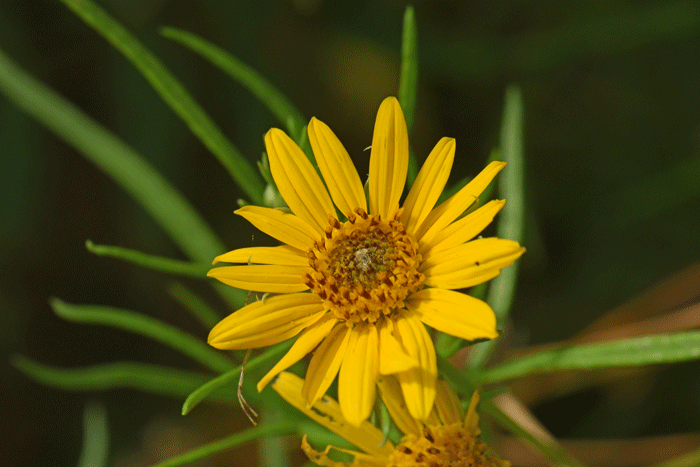
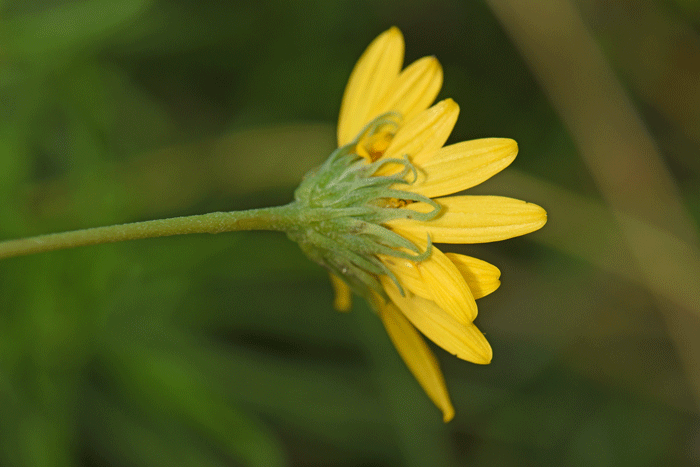
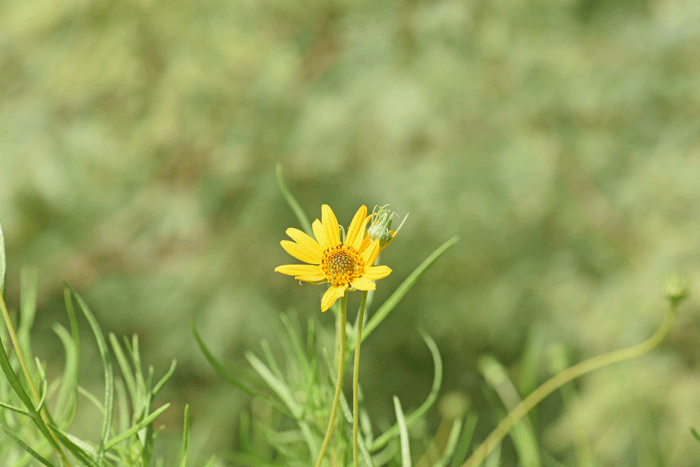
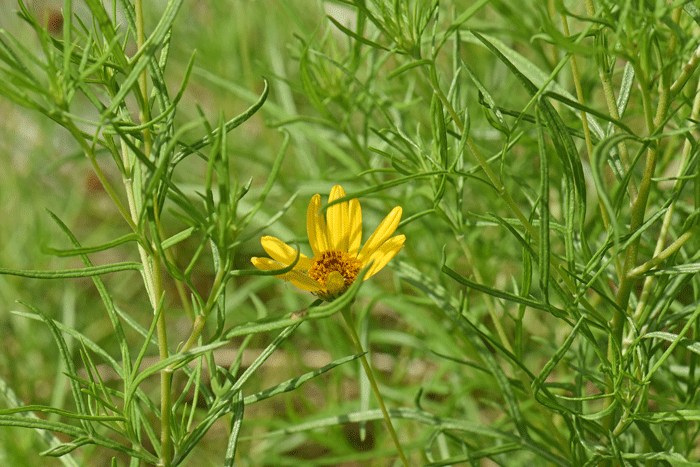
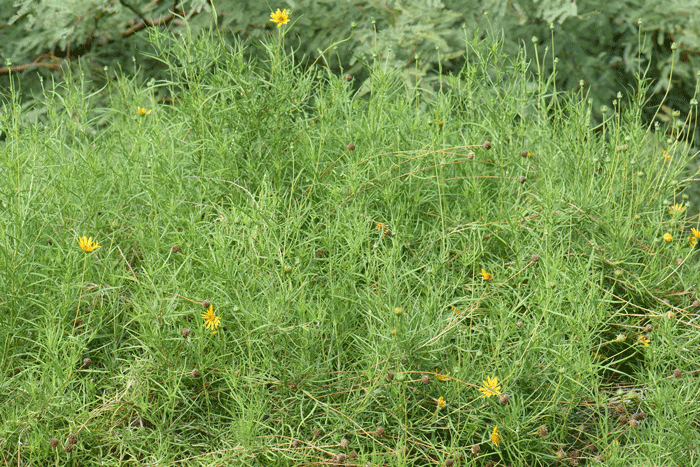
Scientific Name: Viguiera stenoloba
Common Name: Resinbush
Also Called: Skeleton-leaf Goldeneye
Family:Asteraceae, Sunflower Family
Synonyms: (Heliomeris tenuifolia, Viguiera stenoloba var. chihuahuensis, Viguiera stenoloba var. stenoloba)
Status: Native
Duration: Perennial
Size: 2 to 4 feet (61-122 cm), or more; 6 feet (1.8 m).
Growth Form: Shrub or subshrub; numerous branches, top rounded over.
Leaves: Green, dark green; leaves mostly narrowly linear; note the edges of the upper leaves are rolled over (revolute) and look like a mid-seam; leaves with or without a supporting stalk (sessile or sub-sessile); arranged either alternate or opposite along stem; leaves exude aromatic oils.
Flower Color: Yellow, yellow-orange; floral heads in singles, (solitary); numerous flowers on tips of a long leaf-less stalk (inflorescence); flowering heads with both ray and disk florets; bracts or phyllaries that surround the floral heads are abruptly narrowed from broad bases; fruit is a cypsela.
Flowering Season: May or June to September or October
Elevation: 2,500 to 6,000 feet; (762-1,829 m)
Habitat Preferences: Desert or semi-desert areas, dry, rocky sites, prefers well drained soils including; sand, loam, clay, caliche and limestone. Species is locally common and the dominant shrub in parts of Texas in the Trans-Pecos and Rio Grande Plains and less-common in the western part of Edwards Plateau.
Recorded Range: Resinbush, Viguiera stenoloba is rare in the United States where it is found only in NM and TX. However, it is native and common to northeastern Mexico in Chihuahua, Coahuila, Durango, Nuevo León and Tamaulipas.
North America & US County Distribution Map for Viguiera stenoloba.
U.S. Weed Information: Unknown
U.S. Wetland Indicator: Unknown
U.S. Threatened/Endangered Information: Unknown
U.S. Invasive/Noxious Weed Information: Unknown
The genus Viguiera was published in 1753 by Carl Linnaeus, (1707-1778).
In the Southwestern United States: Arizona, New Mexico and Texas each have 4 species of Viguiera, California has 3 species, Nevada has 2 species and Utah has 0 species. Data approximate, subject to revision.
Comments: Resinbush or Skeleton-leaf Goldeneye is a rounded-over bush with numerous showy daisy-like flowers that is used as a desert landscape species in AZ, NM, TX; they are extremely drought tolerant and withstand hot summer days.Members of the genus Viguiera are commonly called "Goldeneyes".
In Southwest Desert Flora also see: Longleaf False Goldeneye, Heliomeris longifolia, which this species looks a little similar to and is somewhat related to.
Known to be utilized as browse for certain species; also serves as seed food for granivorous birds; also provides cover and nesting sites; information from Lady Bird Johnson Wildflower Center (citation below).
Known to attract; nectar-bees, nectar-butterflies, nectar-moths and nectar-insects; information from Lady Bird Johnson Wildflower Center (citation below).
The genus Viguiera was published in 1818 by Karl (Carl), Sigismund Kunth, (1788-1850).
The species epithet “stenoloba” (stenolo'ba:) means narrow-lobed, a reference to the narrowly linear leaves.

